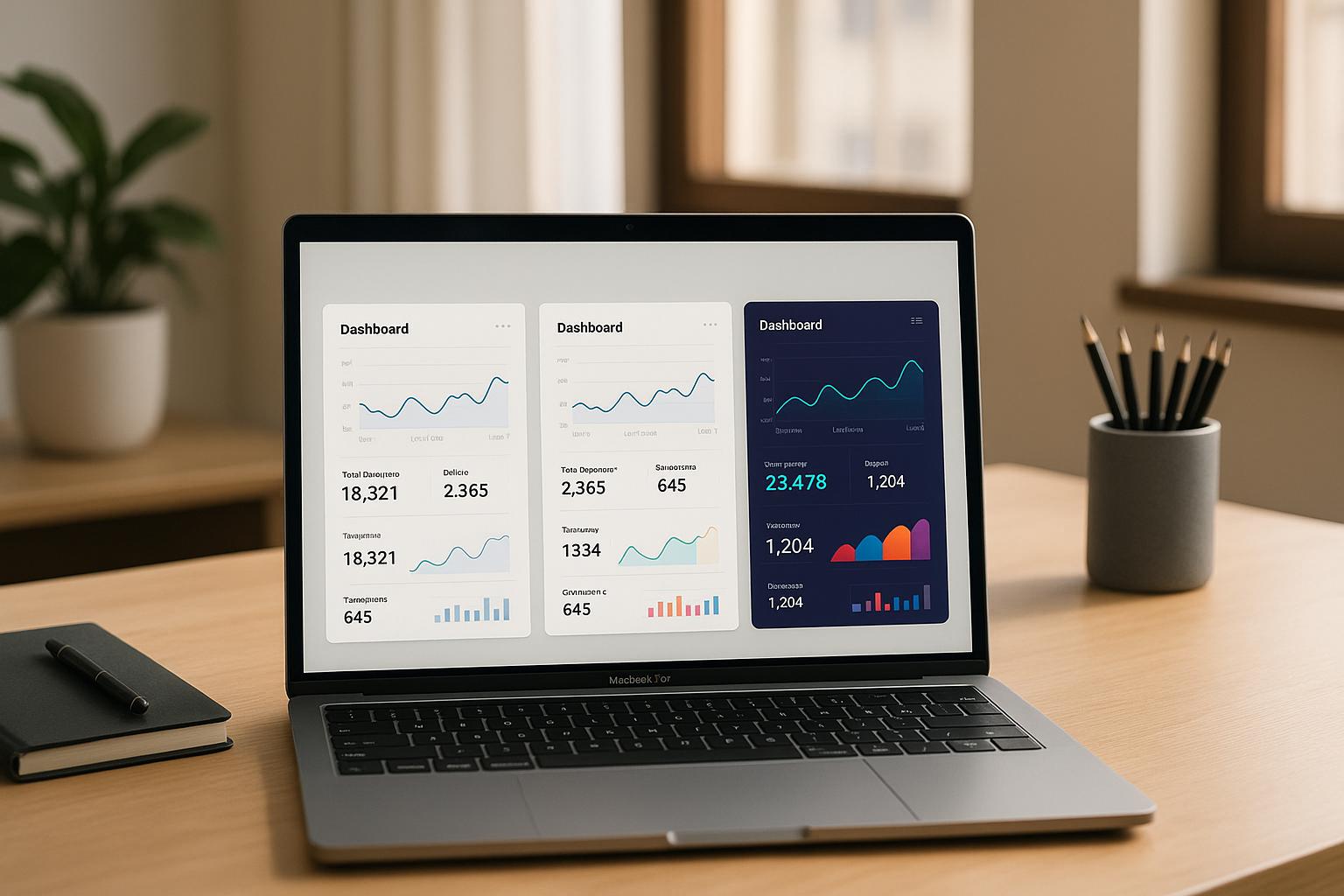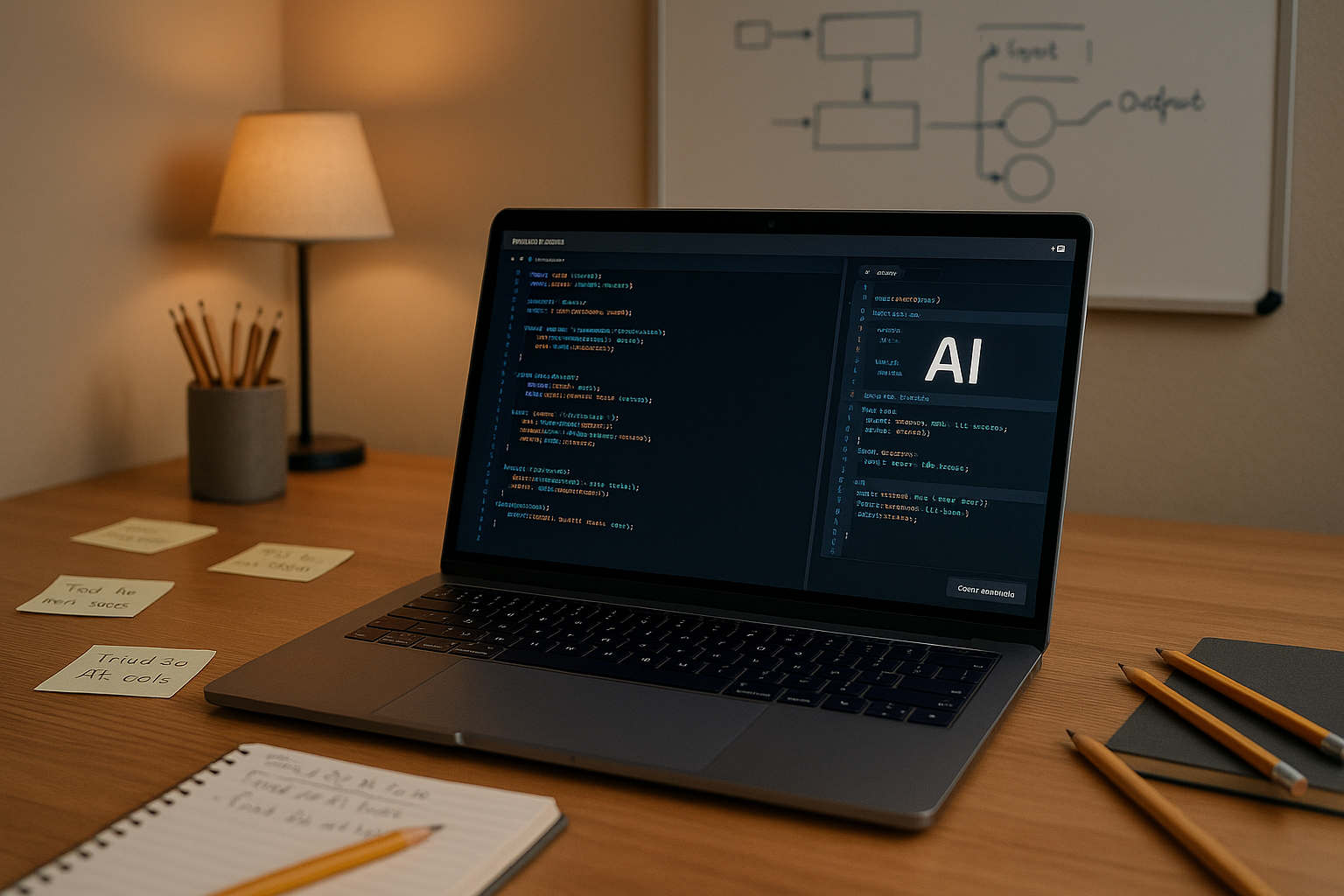In the SaaS world, looking like everyone else is a fast track to being ignored. Most products fall into the same traps: copying competitors, overloading features, and using generic designs. The result? Customers choose based on price, churn increases, and growth becomes harder.
Here’s the bottom line: if your SaaS doesn’t stand out, it gets lost. To fix this, focus on what matters:
- Stop copying competitors: Prioritize solving user problems instead of chasing "feature parity."
- Understand your users deeply: Go beyond surveys – watch how they work and uncover real pain points.
- Simplify your design: Avoid overused templates and create experiences tailored to your audience.
- Focus on what you’re best at: Be great at one or two things instead of trying to do it all.
- Clarify your brand: Communicate why your product is the better choice without relying on buzzwords.
The SaaS market is crowded, but by solving real problems and focusing on user needs, you can rise above the noise.
How to Stand Out in a Crowded SaaS Market
The Problem: Why Most SaaS Products Look the Same
Take a look at any SaaS marketplace today, and you’ll notice a pattern: dashboards, onboarding flows, and feature sets that all seem cut from the same cloth. This sameness isn’t accidental – it’s the result of market forces and design habits that push companies toward creating products that mirror one another. Let’s dive into the key reasons behind this trend.
Market Saturation and Feature Parity
The SaaS industry has exploded with options, with thousands of tools vying for attention in every category imaginable. To keep up, many companies focus on matching their competitors’ features instead of solving unique problems for their users. This approach – driven by external benchmarks – often leads to bloated products that lack originality. As Catherine Shyu, Product Lead at Coinbase, explains:
"’Feature parity’ should not be treated as a hard requirement… It’s a risky blanket statement that causes bloat by including all the mistakes you made while building the original product." [1]
Product consultant Saeed Khan offers a blunt warning:
"If you are having internal discussions about FEATURE PARITY vs. a competitor, you need to stop immediately. These discussions and the ensuing work are a losing game." [2]
Jason Fried, Co-founder and CEO of Basecamp, takes it a step further:
"Feature parity is called following. No thank you. You don’t get new if you’re focused on meeting up with old." [1]
The result? A sea of products that feel like slight variations of one another, where the only real differentiator often boils down to price.
Overused Design and UX Patterns
It’s not just the features that are blending together – design and user experience are also stuck in a loop. Many SaaS products rely on the same UI libraries, templated interfaces, and predictable onboarding flows. While these design choices are functional, their overuse strips products of individuality. Think clean white backgrounds, blue accent colors, and grid-based dashboards. Sound familiar? Even onboarding flows follow a standard script: welcome screen, account setup, feature tour, and first task completion. Rarely do these processes reflect the unique goals or audience of the product.
The Cost of Being Generic
When design and functionality lack originality, the consequences are clear: users disengage, brand recall fades, and companies struggle to stand out in a crowded market. Instead of building loyalty, these products often push users to choose the cheapest option available.
Arjun V. Paul, CEO of Zoko, sums it up perfectly:
"Stop copying your competitors’ features… Build with purpose, not paranoia." [1]
Sarah Hum, Co-founder of Canny, stresses the importance of listening to users over obsessing about rivals:
"We have a wealth of customer feedback… we’d be naive to blindly follow competitors." [1]
In a market filled with look-alike products, companies that fail to create distinct, meaningful experiences lose the chance to charge premium prices or cultivate a passionate, loyal user base. Instead, they risk fading into the background, just another face in an overcrowded crowd.
Root Causes: Why SaaS Products End Up Looking Similar
To understand why so many SaaS products seem indistinguishable, it’s essential to dig into the underlying forces at play. Even founders with bold, original ideas often find themselves following well-trodden paths. Let’s break down some of the key internal factors that contribute to this sameness.
Trend-Driven Design Systems
The design world tends to move in waves, and SaaS companies often ride these waves without questioning whether the latest trends truly serve their users. Take Material Design, for instance. When it became popular, countless SaaS products adopted its card-based layouts and floating action buttons. Then came the minimalism boom, and suddenly dashboards everywhere were reduced to sparse white screens with nearly identical typography.
The issue isn’t that these design systems are inherently flawed – it’s that they’re applied across the board without considering the unique needs of each product. A project management tool aimed at creative agencies has vastly different requirements than a financial dashboard for accountants, yet both often end up looking strikingly similar.
This trend-following behavior extends to technology features as well. For example, the rush to add dark mode led many SaaS products to implement nearly identical toggle experiences, regardless of whether their users even cared about or needed the feature. This cookie-cutter approach strips away any sense of individuality or distinctiveness.
Feature Overload Without Focus
Another common pitfall is feature bloat. Many SaaS founders feel compelled to say yes to every customer request, thinking it demonstrates a user-first mindset. While this might seem logical, it often results in products that lose their focus. Instead of excelling at one thing, they try to do everything – and end up doing none of it particularly well.
This scattershot approach creates products with sprawling feature sets that all start to look alike. Rather than standing out for solving a specific problem exceptionally well, they blur together in a crowded market of "good enough" solutions.
Feature overload doesn’t just confuse users – it also throws internal teams off balance. Developers lose sight of the product’s core purpose. Marketing teams struggle to craft clear, compelling messages. Sales teams can’t articulate why their product is the best choice. This lack of clarity inevitably seeps into the user experience, making it harder for customers to see the product’s value.
Lack of Deep User Research
When companies rely on surface-level research – like surveys or basic analytics – they end up creating generic products. These methods often fail to uncover the nuances of how users actually work, leading to solutions that feel disconnected from real-world needs.
True differentiation comes from understanding the subtle frustrations, workarounds, and unspoken needs that users deal with every day. This requires going beyond numbers and spending time with customers in their work environments. Observing how they solve problems and identifying gaps between what they say and what they do can reveal insights that drive meaningful innovation.
Without this deeper level of research, SaaS products often solve imagined problems rather than real ones. The result? Tools that feel out of touch and fail to resonate with users’ daily challenges.
Poor Brand Positioning
Brand positioning answers a critical question: "Why should someone choose this product over the others?" [4]. Unfortunately, many SaaS companies struggle to define what sets them apart, relying instead on surface-level features or generic claims.
Weak positioning has far-reaching consequences. It leads to lower-quality customers, ineffective marketing, higher Customer Acquisition Costs (CAC), and shorter customer lifespans [3]. Internally, it creates misalignment, muddled messaging, and confusion about the product’s purpose.
The problem is made worse when companies use the same buzzwords – "intuitive", "powerful", "streamlined", "enterprise-grade" – to describe themselves. These vague terms don’t communicate what makes a product special. As a result, SaaS brands end up competing on price instead of value, which often leads to a "race to the bottom" where nobody wins.
Visual branding suffers too. Since 55% of first impressions are visual [5], a lack of distinctive design further contributes to the sea of sameness. When companies fail to craft unique visual identities that reflect their positioning, they struggle to stand out in an already crowded market. Even great products can get lost if potential users don’t immediately understand what makes them different or better [4].
Solutions: How to Make Your SaaS Stand Out
Now that we’ve uncovered why so many SaaS products seem interchangeable, let’s dive into actionable strategies to help your product rise above the crowd. These aren’t just ideas – they’re approaches that successful companies have used to create products that truly resonate with users.
User-Led Product Discovery
At the heart of any standout SaaS product is a genuine understanding of what users actually need. This isn’t about skimming through survey results or glancing at analytics. User-led product discovery means working directly with your customers to get a clear picture of their workflows and pain points.
Start by conducting structured customer interviews. Instead of asking questions that lead users to the answers you expect – like, "Would you find this feature useful?" – focus on understanding their current processes. Ask things like, "Can you walk me through how you handled this task yesterday?" or "What’s the most frustrating part of your current workflow?" These open-ended questions reveal the real challenges users face and uncover gaps between what they think they need and what would actually solve their problems.
Once you’ve gathered insights, use prototype testing to validate your ideas before diving into full development. Create simple mockups or clickable prototypes and observe how users interact with them. Watch for hesitation, skipped elements, or confusion – these moments offer valuable clues for refining your design.
The key is to make this process ongoing. Regularly gathering and acting on user feedback ensures your product evolves in ways that align with real needs, setting the stage for smarter design and meaningful differentiation.
AI-Driven and Adaptive Design Systems
While traditional design systems focus on consistency, they often lead to a sense of sameness across products. AI-driven and adaptive design systems take a different approach, personalizing the experience based on individual user behavior and preferences.
Take adaptive UX as an example. Instead of offering the same interface to everyone, adaptive systems can adjust dashboards based on how users interact with the product. A power user might see advanced tools front and center, while a new user gets a simplified layout with helpful guidance.
Another game-changer is personalized onboarding. Rather than forcing all users through a one-size-fits-all tutorial, AI can analyze factors like role, company size, and early interactions to craft a tailored introduction. This approach helps users quickly see the value that’s most relevant to them, boosting activation rates.
Dynamic feature discovery is another way to avoid overwhelming users while ensuring they find what they need. Instead of cramming every feature into the navigation, AI can surface tools and options based on the user’s current task or past behavior. The result? A cleaner, more intuitive interface that feels custom-built for each user.
With tools like machine learning APIs, behavioral analytics platforms, and modern frontend frameworks, even smaller teams can implement these strategies without starting from scratch. By tailoring the experience to individual users, your design becomes a powerful way to stand out.
Focused Differentiation Strategies
Standing out doesn’t mean you have to be different in every way. Sometimes, it’s about being exceptional in one or two areas that matter most. Focused differentiation is all about making deliberate choices – choosing where to excel and where being "good enough" is just fine.
Take niche targeting, for instance. Instead of trying to appeal to everyone, focus on a specific group with unique needs. For example, a project management tool tailored for creative agencies will always beat a generic tool for that audience, even if the generic option has more features.
Another approach is delivering superior quality in core areas. If your users spend the majority of their time in one part of your app, make that experience seamless. Polish every detail, optimize for speed, and add thoughtful touches that make daily use enjoyable.
The secret here is prioritization. You can’t do everything perfectly, so focus on the 2-3 areas where excellence will have the greatest impact on user satisfaction and your bottom line.
Brand Story and Positioning
Your brand story and positioning are what tie everything together. They define why your product is the best choice and communicate that message clearly to your audience.
Start by crafting a strong core value proposition. What’s the one thing your product does better than anything else? Be specific – generic phrases like "streamline your workflow" don’t help users decide if your product is right for them. Instead, focus on what makes your solution uniquely valuable for your ideal customers.
Once you’ve nailed your value proposition, back it up with real-world examples. Share customer success stories that showcase how your product solves specific problems. Consistency in messaging and visual identity also plays a big role in reinforcing your brand promise.
sbb-itb-51b9a02
Implementation: Tools and Frameworks for Differentiation
To successfully set your product apart, you need tools and frameworks that keep user feedback at the heart of every decision. The right approach can mean the difference between a product that shines and one that blends into the crowd.
Structured Delivery Frameworks
Execution frameworks ensure differentiation is baked into your product from the start, rather than being an afterthought. These frameworks help you validate and refine distinctive features through continuous user feedback, avoiding the pitfalls of rushing to market with a generic solution.
Take AlterSquare‘s I.D.E.A.L. framework, for example. It breaks the process into five clear phases: discovery and strategy, design and validation, agile development, launch preparation, and post-launch support. Each phase builds on insights gathered from users, ensuring every step aligns with their needs.
Rapid prototyping sprints are another essential tool. These short, focused sprints allow you to test ideas quickly and affordably, helping you determine whether a feature resonates with users before committing significant resources to its development.
The beauty of structured frameworks lies in their ability to steer you away from simply mimicking competitors. By prioritizing user research and validation, they open doors to fresh opportunities for differentiation – opportunities that others might overlook. This process naturally leads to more personalized user experiences.
Personalized User Flows and Onboarding
Interactive onboarding can immediately set your SaaS product apart. Instead of a one-size-fits-all tutorial, personalized onboarding adapts to each user’s behavior and needs.
Contextual help systems and in-app walkthroughs deliver guidance at the exact moment users need it, showing them how to complete real tasks using their own data. This approach avoids overwhelming new users with lengthy documentation, instead offering targeted support based on their current actions and experience level.
Using progressive disclosure techniques, you can manage complexity without hiding advanced features. These techniques reveal more sophisticated functionality gradually, as users become more comfortable with the product. This creates a smoother learning curve, helping users feel confident rather than overwhelmed.
To make personalization work, you’ll need to carefully analyze user data. This includes tracking role-specific usage patterns, company size, or behavior that signals expertise levels. With this understanding, you can create meaningful variations in user experiences that align with their unique needs.
Measurement and Iteration
Once you’ve personalized user flows, it’s critical to measure their effectiveness. Feature adoption tracking and performance analytics allow you to see which efforts are making an impact. It’s not just about whether users try new features – it’s about how deeply they engage and whether that engagement leads to meaningful outcomes.
Feedback collection systems should be seamlessly integrated into the user experience. Instead of relying solely on surveys or support tickets, gather insights during natural breaks in user workflows or after they complete specific tasks. This ensures feedback is timely and relevant.
With A/B testing frameworks, you can experiment with different approaches to unique features, analyzing real user behavior to determine what works best. These tests help you make informed, data-driven decisions about which ideas to pursue further.
It’s equally important to let go of what doesn’t work. Regular feature audits help identify underperforming elements, ensuring your product stays focused on what truly sets it apart.
Finally, embrace continuous improvement cycles to keep differentiation an ongoing effort. Regularly revisit user research, analyze performance data, and explore new ways to stand out in a shifting market. This mindset makes differentiation a core part of your product development culture, ensuring your team continually looks for ways to improve and innovate.
Case Studies: SaaS Products That Broke the Mold
Sometimes, bold decisions turn ordinary SaaS into something users can’t live without. These examples highlight how focusing on user experience and targeting specific audiences can lead to standout success.
Example 1: Better UX Driving High Retention
One communication platform reshaped workplace collaboration by ditching traditional email in favor of real-time, channel-based messaging. Features like custom reactions, threaded discussions, and effortless file sharing made the platform feel intuitive and engaging. This user-first approach didn’t just win hearts; it led to rapid adoption, impressive retention rates, and eventually, a significant acquisition.
Example 2: Niche Targeting for Market Success
Another SaaS product found its footing by catering to users overwhelmed by overly complicated design tools. It offered a straightforward interface with pre-made templates and an easy drag-and-drop system, empowering non-designers to create with confidence. By zeroing in on the frustrations of an underserved audience, the company achieved steady and lasting growth.
These stories prove that success often lies in understanding what users need and delivering solutions that hit the mark.
Conclusion: Key Steps to Differentiate Your SaaS
Standing out in the SaaS world isn’t about flashy aesthetics or following trends – it’s about truly understanding your users and solving their real problems. Here’s how you can set your product apart:
Start with deep user research. This is the cornerstone of differentiation. Without a clear grasp of how your users work and the challenges they face, you’re just making educated guesses. Spend time observing their workflows and uncovering the pain points they encounter daily.
Let your design approach stem from these insights. Design isn’t just about looking good – it’s about creating interfaces and features that directly tackle user challenges. Whether it’s simplifying a complicated process or addressing a need others have overlooked, your design should feel like a solution, not just a tool.
Develop clear brand positioning that highlights the unique value you bring. This isn’t about buzzwords or marketing gimmicks; it’s about crafting a brand story that resonates with your audience. Use the insights you’ve gathered to explain why your product matters and how it makes a difference.
Differentiation isn’t just a buzzword – it’s what drives loyalty, retention, and long-term growth. Products that genuinely address user needs don’t just survive in a crowded market – they become indispensable.
Your SaaS doesn’t need to follow the crowd. By focusing on solving real problems and aligning every design and branding decision with user needs, you can build a product that stands out and earns its place as the go-to choice.
FAQs
How can I deeply understand my SaaS users’ needs through effective research?
To get a solid grasp of what your SaaS users need, start by setting specific objectives – whether that’s refining the onboarding process or pinpointing areas where users encounter difficulties. Combine qualitative approaches like interviews and usability testing with quantitative tools such as analytics and surveys. This mix helps you uncover valuable insights into their behavior, challenges, and expectations.
Once you’ve gathered the data, look for patterns and gaps in the user experience. Use these insights to guide your product design and development efforts. By solving real problems your users face, you can build a SaaS product that not only engages them but also distinguishes itself in a crowded market.
How can I use AI and adaptive design to make my SaaS product stand out?
To set your SaaS product apart, AI-driven design systems offer a powerful way to create user interfaces that feel personal and dynamic. By analyzing user behavior, AI can adjust layouts, features, and content to match individual preferences. The result? A more engaging and satisfying experience for your users. On top of that, AI tools can take over repetitive design tasks, giving your team more time to focus on fresh ideas and big-picture innovation.
When it comes to adaptive UX frameworks, machine learning takes things a step further. These models can tweak workflows and interface elements in real-time, ensuring every user enjoys a smooth, tailored experience. This kind of personalization doesn’t just make your product easier to use – it strengthens the connection between your brand and your audience by addressing their specific needs.
By blending AI with adaptive design, you’ll be able to create a product that’s not only scalable but also deeply user-focused, giving you a strong advantage in the competitive SaaS landscape.
How can I make my SaaS product stand out in a competitive market?
In the bustling world of SaaS, standing out requires a sharp focus on differentiation strategies. By zeroing in on a specific audience and addressing their particular needs, you can craft features or solutions that truly connect with them. This approach doesn’t just help you carve out your own space in the market – it also fosters stronger loyalty among your customers.
Consider designing your product to tackle niche challenges, creating personalized user experiences, or incorporating tools that adapt to individual users. These efforts make your SaaS not just another option but the go-to choice for your audience. Instead of merely competing, your product thrives by giving people exactly what they’ve been searching for.









Leave a Reply